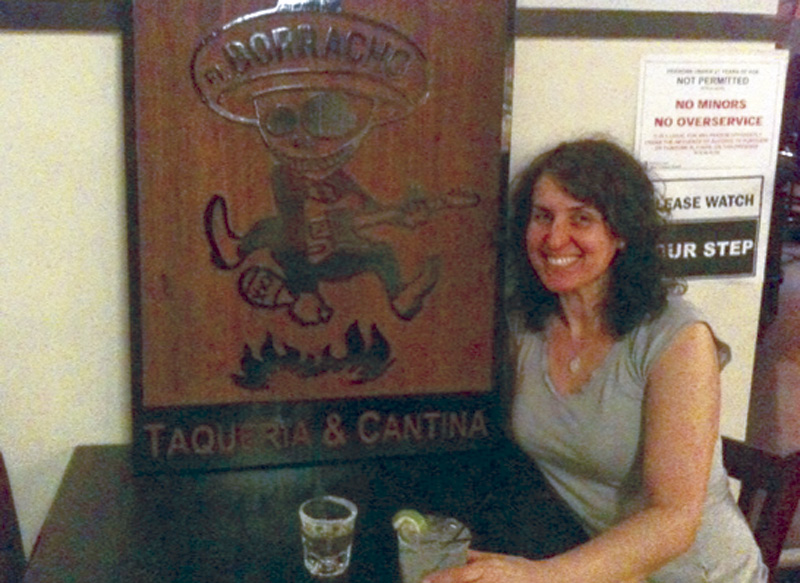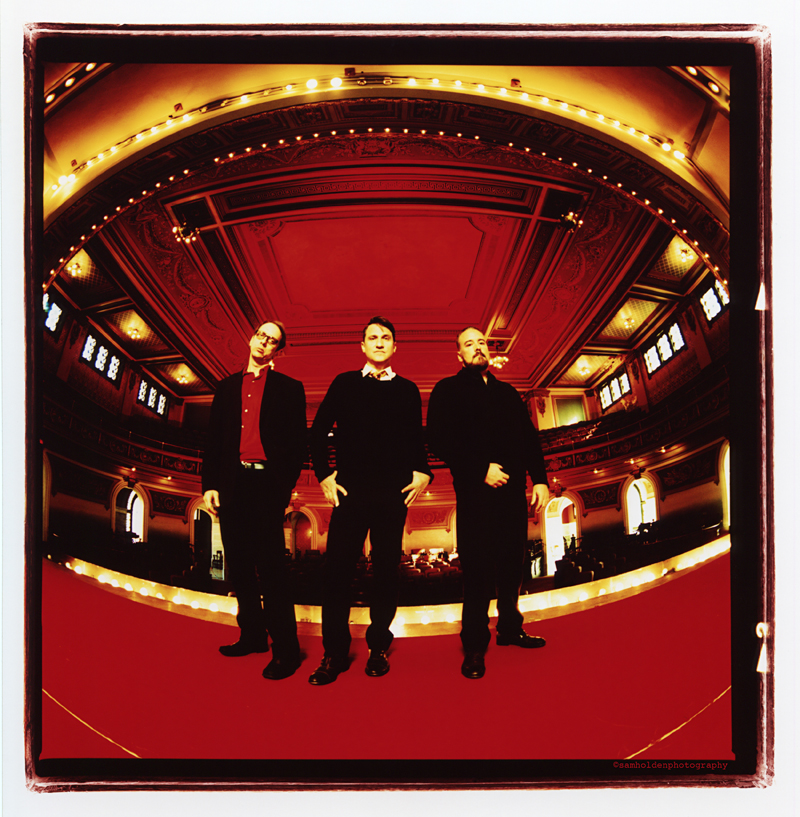There’s a notorious bit of rock-‘n’-roll lore, chronicled extensively in Marianne Faithfull’s memoirs and numerous other Rolling Stones–related biographies, involving a drug bust at Keith Richards’ luxe Redlands mansion and a wild-eyed Ms. Faithfull wrapped in nothing but a fur rug, purportedly quite high on LSD (or something approximating it). Like tossing televisions off hotel balconies or tossing one’s soul into an amoral abyss in pursuit of artistic nirvana, such tales remain lodged firmly in rock’s canon because of the persistent notion that creating something as primal and transformative as, say, “Sister Morphine” can only happen under perilous spiritual duress.
Seattle’s Dutchess and the Duke’s nearly flawless full-length debut (released on Hardly Art early last month) is swiftly earning legitimate comparisons to said Stones and early Bob Dylan, but on this unseasonably chilly Wednesday in West Seattle, the need for vice-fueled debauchery and lurid, expensive exploits isn’t high on the list of priorities for primary band members Jesse Lortz and Kimberly Morrison. We’re drinking bottles of Stella Artois at Magic Basement Studios, where self-taught engineer Bryan Standridge recorded She’s the Dutchess, He’s the Duke. Standridge has joined us to discuss the making of the record, while his wife tends to their audibly agitated baby girl upstairs. The room’s decor is a mixture of the typical kitschy chaos that tends to characterize humble creative spaces: There’s a broken bottle of mysterious Vietnamese liquor in the corner, retained because of the permanently pickled baby cobra contained within; various pieces of vintage recording equipment are draped with thrift-store linens; a shaker shaped and shaded exactly like a ripe avocado rests on the couch; and an abandoned Ewok Village diorama is perched on a corner shelf.
These seem like comfortable surroundings for Lortz and Morrison, friends since high school who finish each other’s sarcastic sentences compulsively, bicker lightly in siblingesque tones, and exude the casual confidence that comes from knowing that you’re paired with a logical, longstanding (and for the record, platonic) artistic partner.
“We’d always just hang out, watch movies, and smoke cigarettes,” says Lortz, recalling their suburban adolescence in South King County. “My girlfriend was really square and really hot, and her boyfriend was really square and really hot. So there was them and then us two total scumbags,” he laughs.
The pair bonded over junk food and general juvenile malaise initially, but reconnected in their early 20s shortly after Lortz ran an ad in now-defunct Seattle weekly The Rocket seeking a new guitarist for his surf band. Morrison saw the ad and recognized Lortz immediately: “It said ‘South King County surf band needs rhythm-guitar player, call Jesse,’ and I thought, ‘You know, the only guy with enough balls in South King County to have a surf band would be Jesse.'” Though she didn’t call him, the two eventually ended up on the same live bill, since Morrison was playing in a surf project of her own at the time.
Both Dick Dale–channeling outfits dissolved shortly thereafter, and their overlapping peer groups began generating and dismantling bands over the next few years, with Lortz and Morrison achieving relative stability in 2002 with a “deconstructionist R&B” band called the Flying Dutchmen, which cultivated a minor underground following and managed to eke out several singles and one rather atrociously recorded full-length (hand-held cassette recorders and karaoke machines do not sonic masterpieces make) before breaking up.
“I just met Jesse and said, ‘Hey, you guys are great, I just bought your record!’, recalls Standridge. “And he just shook his head like he totally disapproved, which I took as a bad sign. I went home and listened to it and immediately agreed,” he chuckles. Wisely, they enlisted Standridge’s help when they set out to record their first 7-inch, and managed to capture two exquisitely composed, beautifully morose pop-folk songs in an immediate and articulate fashion, using a simple 8-track. Lortz released “Reservoir Park” b/w “Mary” on his own Boom Boom Castle Records, which eventually attracted the attention of Sub Pop imprint Hardly Art Records—attention on a larger scale than they were either used to or entirely prepared for.
“Jesse told me that we were supposed to go meet with this label and I’m like, ‘Really? Why??’,” remembers Morrison. “We were super nervous, downing drinks…” she continues. “We got wasted before we went to the meeting,” interjects Jesse. Morrison was incredulous when Sub Pop president Jonathan Poneman alluded to printing several thousand copies of their debut. “We just laughed and said, ‘Do you really think you can sell that many copies of our record?’ [Poneman] said, ‘Well, we wouldn’t be talking to you if we didn’t.’ And I was like, ‘OK, whatever, dude, it’s your funeral!'”
No eulogies will be necessary. She’s the Dutchess, He’s the Duke was well received right out of the gate; the record is currently awash in critical superlatives (Pitchfork christened it a “classic” and bestowed it with an 8.2 just last week), and the band is rapidly acquiring a local and national fan base, thanks to strong tours this summer, both solo and paired with Sub Pop’s Fleet Foxes. While all those associations with iconic ’60s rock and folk artists are entirely merited, what ultimately makes this a strong record has more to do with timeless construction than with time-traveling cleverness. As “Reservoir Park” leads the way, the record’s 10 tracks unfold with unsettling sonic and lyrical intimacy. Lortz’s Jaggeresque vocals and brightly picked guitars push sharply into the foreground, painting pictures of tricks turned, lies perpetuated, and ghosts who won’t leave, while Morrison’s sweetly bewitching harmonies and flourishes of flute add flickers of light to his dour palette. Donnie Hilstad’s minimalist percussion and periodic outbursts of handclaps add the punctuation and momentum necessary to make it a record entirely worth listening to from start to finish.
When asked if all those hosannas being shouted in their direction are overwhelming or surprising, Lortz offers a refreshingly honest response. “[This band] was kind of an experiment from the beginning, but as shitty as it sounds, it’s not that surprising because they’re good songs and there’s the momentum of the PR machine behind us, which we’ve never dealt with.”
“When we listened to the final mix of the record, we all cracked a beer and were like, ‘This is so cool,'” says Morrison. “We were almost tearing up.”
“I cried outside,” says Lortz.
“I cried in the room,” says Morrison. “We were proud of each other.”








